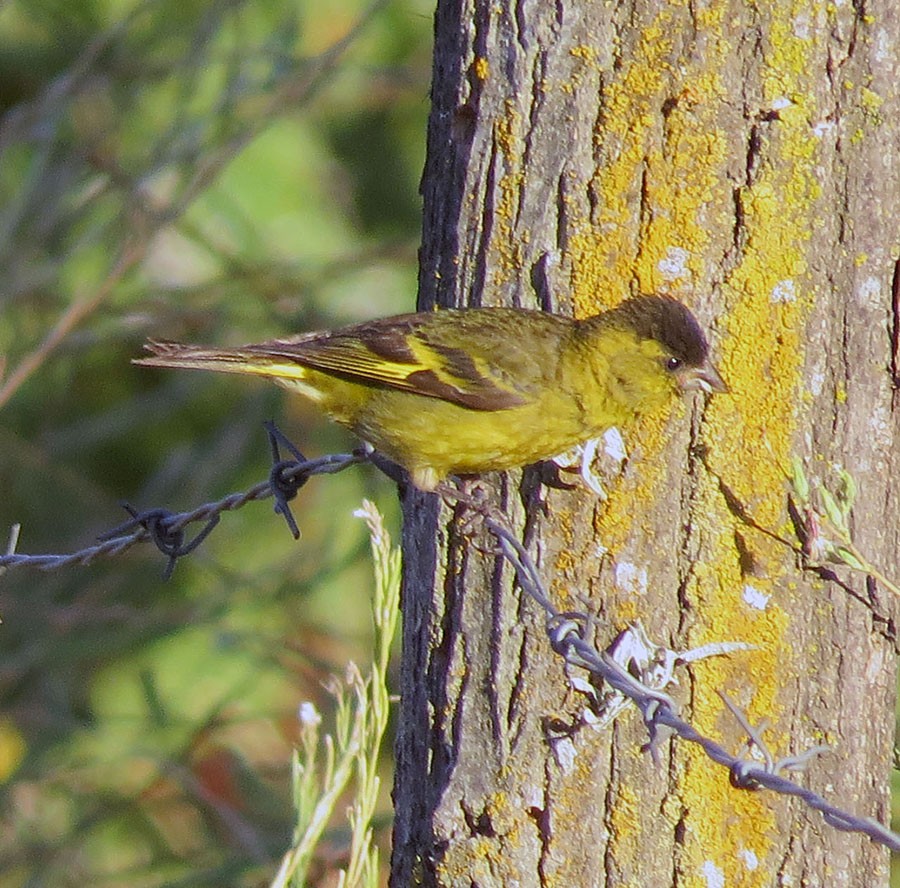Black-chinned Siskin
A species of Siskins and new world goldfinches Scientific name : Spinus barbatus Genus : Siskins and new world goldfinches
Black-chinned Siskin, A species of Siskins and new world goldfinches
Botanical name: Spinus barbatus
Genus: Siskins and new world goldfinches
Content
Description General Info
Description
The black-chinned siskin grows to a length of about 13 centimetres (5 in). The male has the crown and the centre of the upper throat black. The rest of the head and the upper parts of the body are yellowish-olive streaked with black. The rump is yellow and the wings are black with two yellowish bars and a yellow patch on the primary feathers. The underparts are greenish-yellow and the belly is white. The appearance of the female is similar to the male but the colouring is more muted. She lacks the black on head and throat. The head and back are a greyish-olive above with pale yellowish-olive underparts and a whitish belly. The only other bird with which it is likely to be confused is the hooded siskin (Spinus magellanica); however, that bird is not found so far south, the male has a larger area of black on head and throat, and the female has a yellow rump. 
Size
13 cm
Nest Placement
Tree
Feeding Habits
Black-chinned Siskin primarily feeds on small seeds from plants like tussac, wild celery, and dandelions, as well as on insects and larvae. It also enjoys Empetrum rubrum berries. Black-chinned Siskin forages at various heights, from ground to canopy, and can often be seen perched on grass or tussac stems to extract seeds. Typically seen in pairs or small groups, black-chinned Siskin may join larger flocks or mix with S. magellanicus outside of the breeding season.
Habitat
The black-chinned Siskin is typically found in the ecotone between forest boundaries and open areas, favoring high forest environments, including both coniferous and broadleaf types, as well as thickets and brush. This species is adaptable, occupying habitats with scattered Nothofagus shrubs and low vegetation up to altitudes of 1500 meters. It is also prevalent in subtropical or tropical dry shrubland, gardens, urban areas, and roadside vegetation. In certain regions, the black-chinned Siskin dwells amidst the introduced trees and shrubs and within the dense tussac grasslands.
Dite type
Granivorous
General Info
Feeding Habits
Bird food type
Distribution Area
The black-chinned siskin is native to southern Chile and southern Argentina as far south as Tierra del Fuego, and also the Falkland Islands. It ranges up to about 1,500 metres (4,900 ft) in altitude and inhabits the edges of forests, light woodland and bushy areas, including gardens and urban areas; it is usually seen in flocks and often feeds on the ground. 
Species Status
Not globally threatened.
